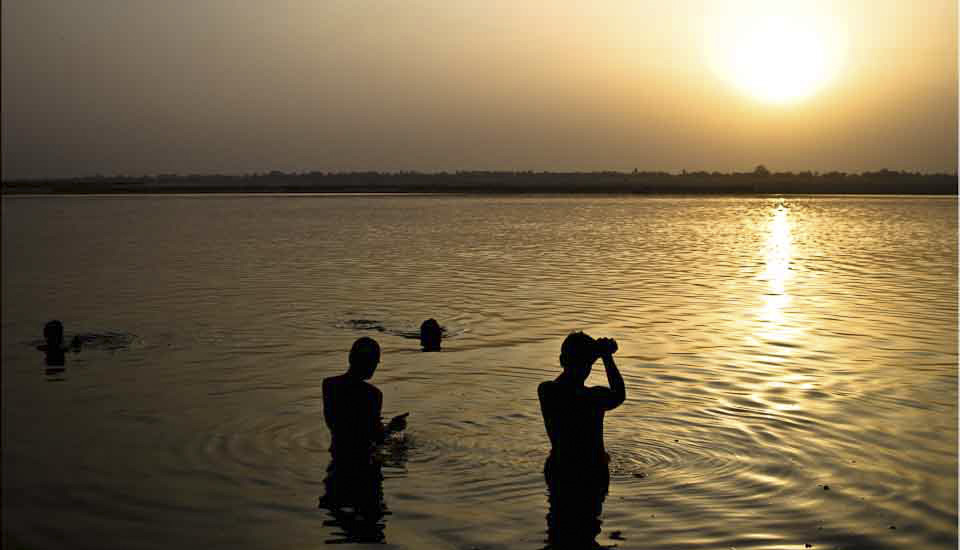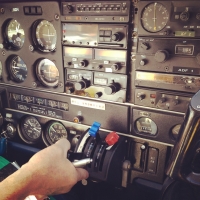.jpg)
Juniper on the Mountainside
A steep and rocky path runs from the Azzaden Valley, up through the twisting junipers, over the Tizi Oudid, around the flank of a mountain, and down into the village of Imlil. The High Atlas Mountains of Morocco stretch out all around, as far as the eye can see.
We were starting out early: my Berber guide Mohammed was worried about the impact of the hot autumn sun on our steep climb from the trekking lodge (Azzaden Trekking Lodge) near Tizi Oussem in the Toubkal National Park in Morocco, to the mountain pass we needed to cross.
I was worried too!
I had found hiking in the High Atlas Mountains more difficult than I had anticipated, and spent much of the time struggling and cursing to myself as I walked over the rough and rocky paths strewn with rubbish, donkey droppings, and loose scree. Of course, in the evenings, after a hot bath or shower and over a fragrant tagine of freshly cooked food, all pain was forgotten.
In theory, I was rested. We had only hiked six-and-a-bit kilometres (3.8 mi) the day before, taking a picturesque circuit around the Azzaden Valley (see: Walking in the Azzaden Valley). But, even when I was young, I was no good on up-hills, and the first two kilometres of this day – a 12-km trek through the mountain pass known as Tizi Oudid (Tizi n’Oudid) to the town of Imlil – was mostly uphill.
We set off at 8am. The mountain valley was still in shade that gave the jagged rocks a purple hue. But as Mohammed had promised, before long the sun was up, beating on our backs through an almost-completely-clear sky.
We reached the pass – which sits at 2,219 metres (7280 feet) – before 10am; from there the path flanking the mountainside is as much down as up. That was good news!
The other good news was that we would pass through the town of Imlil itself, giving me a chance to look at some genuine Berber carpets before returning to my accommodation for the night.
That thought, and the breathtaking views (and some nuts and chocolate), kept my spirits high.
.jpg)
Early Morning over Azzaden Valley
As we set off, I have extensive views over the valley from my lodgings. The sky is light, but the sun has not yet reached over the mountain peaks.
.jpg)
Rocks on a Steep Hillside
Everything has a purple hue in the low light. The rocks in these mountains are a mix of volcanic, sedimentary, and metamorphic types, and are scattered across the arid landscape.

Shelter from the Storms
These rough huts are common in the mountains where herders and their goats might get caught out by inclement weather or need overnight protection from predators.

Cairn on the Hill
The path rises steadily, up through the rocks – some of which have been piled into cairns.

Nature’s Sculpture : Bent and Twisted
I was endlessly fascinated by the twisting trunks and tangled roots of the native Spanish juniper trees (Juniperus thurifera).

More Rocks on the Hillside
As the sky gradually lightens, the colours in the rock become more dramatic.

Spanish Juniper – Juniperus Thurifera
These native junipers are hardy trees that cling to the rocky slopes, leaning into the winds.

Prickly Juniper – Juniperus Oxycedrus
This Mediterranean High Atlas Juniper Steppe is a montane grass and shrubland ecoregion, home to several types of juniper and cedar. (iPhone15Pro)

Rocky Path
The track around the flank of the mountain is rough under foot and often vague. Good boots and a local guide are essentials!

Shadow Selfie on the Hill
We’ve been on the track just over an hour and the rising sun sends strong shadows over the rough terrain.

Light in the Junipers
The angled morning light sets the rocky ground and the juniper trunks aglow.

Nature’s Artworks : Twisted Trunks

Cairns at the Top
More rocky cairns mark the pass. Mountain views stretch in all directions.

2219 Metres – 7280 Feet

Rounding the Bend
Berber villages dot the valleys as we follow the goat tracks around the mountain.

Mountain Peaks
The High Atlas stretch out into the distance. The path itself is loose and rocky underfoot.

Red Mountainside
The mountainsides show off their striations of colour as the sun sits high in the sky.

Black Beetle
In the absence of any other wildlife (we could hear goat herders’ dogs higher up), I got excited by a common darkling beetle.

Imlil Below
The Imlil Valley is fed by the Rehraya River, and is lush with fields of barley and corn, and orchards of walnuts, apples, and cherries.

Leaf Beetle – Chrysomela Populi

Loaded Mule
The little mules and donkeys who service these rough tracks seem to carry their body-weight in goods.

Into Imlil
Finally! We draw into Imlil, where damage from the devastating September 2023 earthquake is still visible.

Red-Billed Chough – Pyrrhocorax Pyrrhocorax
Everywhere you look, repair and rebuilding is taking place.

In a Village Street
Imlil is at the end of the paved road from Marrakesh and caters to the tourists who come to hike in nearby Toubkal National Park.

Souvenirs and Talismans
The shops are full of arts, crafts, and souvenirs. I was on the hunt for my own Berber rug.

Stairs to the Kasbah
The Kasbah du Toubkal, where my walk will end, sits atop a hill on the outskirts of Imlil.

The Kasbah Shop
Admiring more carpets makes for a good excuse to stop after the short, steep climb. (iPhone15Pro)

Fattah Albaz
The shopkeeper is always ready to offer cups of mint tea and have a chat.
 My four days of hiking in the High Atlas ended here: with a hot shower, a tasty tagine, and one last night at the Kasbah before travelling back to Marrakesh the next day.
My four days of hiking in the High Atlas ended here: with a hot shower, a tasty tagine, and one last night at the Kasbah before travelling back to Marrakesh the next day.
As reminders of my trek, I had sore muscles, a sense of accomplishment, and a nice new Berber rug.
Until next time!
Photos: 12October2024


































.png)

